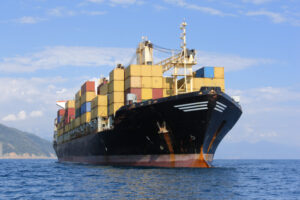
In January-November 2024, Ukraine increased imports of aluminum and aluminum products by 22.29% to $409.063 million, while exports increased by 30% to $115.982 million.
In November, aluminum imports amounted to $32.794 million, while exports amounted to $10.423 million.
In addition, in 2023, Ukraine increased imports of aluminum and aluminum products by 7.7% to $366.463 million.
In 2023, exports of aluminum and aluminum products increased by 0.7% compared to 2022, to $97.616 million.
Aluminum is widely used as a structural material. The main advantages of aluminum are its lightness, stamping resistance, corrosion resistance, high thermal conductivity, and non-toxicity of its compounds. In particular, these properties have made aluminum extremely popular in the production of cookware, aluminum foil in the food industry, and packaging. The first three properties have made aluminum the main raw material in the aviation and aerospace industries (recently it has been replaced by composite materials, primarily carbon fiber). After the construction and production of packaging, such as aluminum cans and foil, the energy sector is the largest consumer of the metal.

In January-November this year, Ukrainian companies increased imports of copper and copper products in value terms by 6.1% year-on-year to $127.286 million.
According to customs statistics released by the State Customs Service of Ukraine on Monday, exports of copper and copper products increased by 24.5% to $81.110 million over the period under review.
In November, Ukraine imported copper worth $11.033 million and exported it worth $8.129 million.
As reported, in 2023, Ukraine increased imports of copper and copper products by 2.2 times compared to 2022 – up to $140.795 million, while exports decreased by 20.1% to $72.078 million.
Copper is widely used in electrical engineering, pipe manufacturing, alloys, medicine and other industries.

The Export Credit Agency of Ukraine (ECA) has supported exports worth UAH 7.22 billion in 11 months of 2024, First Vice Prime Minister and Minister of Economy Yulia Svyrydenko said.
“Supporting and developing non-resource exports is one of the key areas of the Made in Ukraine policy. Over eleven months, the ECA has insured UAH 1 billion of export credits, supporting UAH 7.22 billion of exports. This is almost UAH 2 billion more than in January-November 2023. It is important that one hryvnia of insurance liability was converted into UAH 7.83 of future export revenue,” the press service of the Ministry of Economy quoted the Deputy Prime Minister as saying.
According to the Ministry, the top three regions in terms of exports supported over 11 months are as follows: Kyiv – UAH 3.8 billion (UAH 304 million of loans issued), Lviv – UAH 1.25 billion (UAH 147 million), Vinnytsia – UAH 702.8 million (UAH 183 million).
In 2024, eight banks insured their clients’ loans with the ECA. Ukrgasbank ranked first in terms of supported exports for the period under review (UAH 2.9 billion), FUIB was second (UAH 1.78 billion), and MTB Bank was third (UAH 980 million).
The most popular countries for exporting Ukrainian goods are Poland, the UAE, Azerbaijan, Germany, and Slovakia.
The largest export volumes were in the commodity groups of milk and dairy products, wood and wood products, and processed fruits and vegetables.
The ECA instruments are one of the elements of the “Made in Ukraine” policy, which was presented by President Volodymyr Zelenskyy in February. Its goal is to support non-resource exports, develop production and attract investment in the real sector, the Ministry of Economy reminded.

Ukrainian companies increased exports of ferrous scrap by 62.4% year-on-year in January-November this year, up to 261,578 thousand tons from 161,025 thousand tons.
According to the statistics released by the State Customs Service on Monday, 34.608 thousand tons of scrap were exported in November, 24.549 thousand tons in October, 24.767 thousand tons in September, and 28.767 thousand tons in August. tons, in August – 28,425 thousand tons, in July – 24,702 thousand tons, in June – 22,161 thousand tons, in May – 14,952 thousand tons, in April – 26,153 thousand tons, in March – 20,907 thousand tons, in February – 23,194 thousand tons, in January – 17,160 thousand tons.
In monetary terms, scrap exports increased by 76.8% to $82.056 million from $46.406 million.
In January-November, Ukraine exported scrap mainly to Poland (82.56%), Greece (12.58%) and Germany (3.49%).
For the eleven months of the year, the country imported 100 tons of scrap metal for $108 thousand, while in January-November 2023, 987 tons were imported for $383 thousand. This year’s imports were carried out mainly from Turkey (65.74% in monetary terms), the British Virgin Islands (16.67%) and Panama (6.48%).
As reported, in 2023, Ukraine’s scrap collecting enterprise increased scrap exports from the country by 3.4 times compared to the previous year – up to 182,485 thousand tons from 53,557 thousand tons. In monetary terms, exports increased 2.74 times to $52.723 million from $19.271 million.
Earlier, Ukrmetallurgprom President Oleksandr Kalenkov stated in a column on the Interfax-Ukraine website that scrap is exported through the European Union, which has a preferential export duty of EUR3 per ton, and from there the raw materials are redirected to real customers. He noted that exporting raw materials directly to customers would cost EUR180 in export duties, and the Ukrainian budget has already lost UAH 350 million.
The head of Ukrmetallurgprom called for a temporary ban on the export of ferrous scrap to provide steelmakers with strategically important raw materials in the face of the ongoing war. He also clarified that a ton of scrap processed into steel brings in 10 times more to the budget than the EU export duty, which is about $300 per ton.
In 2022, Ukraine reduced exports of ferrous scrap by 11.5 times compared to the previous year, to 53,557 thousand tons, and in monetary terms, it decreased by 12.4 times, to $19.271 million.

Imports of tractors to Ukraine in January-November this year amounted to $722.53 million, which is almost 7% less than in the same period in 2023, according to statistics from the State Customs Service.
According to the statistics released by the agency, tractors were mainly imported from Germany (15.2% of total imports of this equipment, or $110 million), China (13.9%, or $100 million) and the United States (13.5%, or $97.3 million), while a year earlier it was Germany (17%), Poland (almost 16%) and the Netherlands (13%).
At the same time, in November, Ukraine imported tractors worth $61.9 million, up 33.6% compared to the same month last year.
According to the statistics, in January-November, tractors worth almost $5 million were exported, compared to $5.47 a year earlier, mainly to Moldova (25.8%), Kazakhstan (14.8%) and the Czech Republic (11.8%).

In January-November 2024, 73.4 million tons of cargo were exported through the Ukrainian Sea Corridor, Deputy Minister of Community Development, Territories and Infrastructure Timur Tkachenko said on Facebook on Wednesday.
According to him, the volume of exports since the start of the sea corridor in September 2023 has reached 85 million tons.
In addition, the total volume of cargo handled in Ukrainian ports in January-November reached 91.1 million tons, compared to 52.8 million tons in the same period in 2023.
Grain crops remain the leaders in terms of transshipment volumes: 56.1 million tons were handled in 11 months, which is significantly higher than last year’s figure of 39.4 million tons. The volume of ore cargo increased to 16.7 million tons, up from 3.2 million tons in 2023.
In November, Ukraine’s seaports handled 7.6 million tons of cargo, up from 6.7 million tons last year.
“Ukrainian seaports remain key points in international logistics, proving their ability to adapt to challenges and ensure stability even in the most difficult conditions,” Tkachenko wrote, noting that thanks to well-coordinated work, international support and the Armed Forces of Ukraine, Ukraine continues to maintain its position in the global transportation market and confirm its status as a reliable partner.
Earlier, the Ukrainian Sea Ports Authority reported that the cargo turnover of Ukrainian ports from January 1 to November 17, 2024 increased to 86.8 million tons, of which 53.5 million tons were grain cargo.
In addition, it was reported that during the first year of operation of the Ukrainian Sea Corridor, 64.4 million tons of cargo were transported, including 43.5 million tons of grain. During this period, 2379 vessels used the corridor, exporting products to 46 countries.